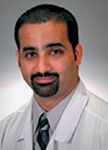Article
ECP probe tip placement key for optimal energy delivery
Author(s):
Fort Lauderdale, FL-Surgeons performing endoscopic cyclophotocoagulation (ECP) to treat glaucoma should take careful note of probe position in order to optimize the treatment, said Malik Kahook, MD, at the annual meeting of the Association for Research in Vision and Ophthalmology.

His comments were based on the findings of a study designed to investigate laser power transmission to target tissue as a function of probe tip distance. Using an experimental model simulating the procedure being performed with Healon 5 (Advanced Medical Optics) as the viscoelastic material, the results showed the probe should be maintained within 2 mm of the ciliary processes to achieve adequate treatment with minimal energy. Findings in a second experiment involving a cadaver eye indicated the number of ciliary processes in view through the endoscope could be used by the surgeon to gauge probe location intraocularly.

"Therefore, surgeons performing ECP need to take care to assess the probe's location and continuously reposition it as needed to assure the tip is within optimal treating distance from the target," he said.
The experimental setup investigating power transmission was performed by inserting the straight laser probe of the EndoOptiks E2 into a glass tube that was filled with Healon 5 or balanced salt solution (BSS). Power was set at 0.25 W. Energy delivered to the target was measured by a laser power meter placed in the bottom of the tube while the probe tip was moved in 1-mm increments from a distance of 0 to 5 mm from the meter.
In the tube filled with the viscoelastic, there was a significant drop-off in power transmission when the distance between the tip and target exceeded 2 mm. In the BSS-filled tube, there was a marked change in power transmission after 4 mm.
To establish anatomic relevance of probe position, the curved probe was inserted into a human cadaver eye via an anterior approach and the number of ciliary processes visible through the endoscope was counted as the probe tip was moved. The number of processes seen increased in increments of two to three per each 1-mm change in probe position over the range of 1 to 5 mm. At a distance of 2 mm, six processes were in view, while four were seen at 1 mm and nine when the probe was held at 3 mm.
Dr. Kahook explained factors that can affect probe location during ECP include movement of the probe itself within as well as in and out of the eye. In addition, positioning can be affected by ocular movement if ECP is being performed using topical anesthesia. Probe curvature also affects position of the instrument tip.
"If the probe is located too far from the ciliary process, treatment may take longer or require higher power settings to achieve the desired endpoint, whereas if held too close, there is a risk of overtreatment with undesired 'popping' of the ciliary processes," Dr. Kahook concluded.
Newsletter
Don’t miss out—get Ophthalmology Times updates on the latest clinical advancements and expert interviews, straight to your inbox.




